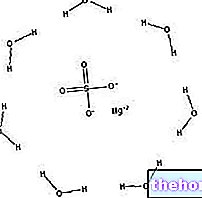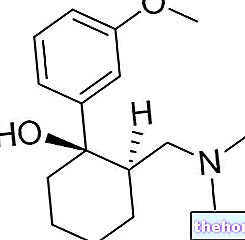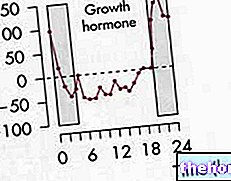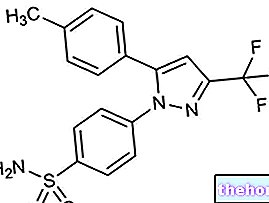
What is Natpar - Parathyroid Hormone and what is it used for?
Natpar is a hormone replacement medicine to treat adults with underactive parathyroid glands, a condition known as hypoparathyroidism.
In patients with this condition, the parathyroid glands in the neck do not produce sufficient amounts of the parathyroid hormone that controls the level of calcium in the blood. As a result, patients have low levels of calcium which can cause problems with the bones, muscles, heart, kidneys and other parts of the body.
Natpar is used in addition to treatment with calcium and vitamin D supplements, when these treatments have not been effective enough.
Because the number of patients with hypoparathyroidism is low, the disease is considered 'rare', and Natpar was designated an 'orphan medicine' (a medicine used in rare diseases) on 18 December 2013.
The active ingredient in Natpar is parathyroid hormone.
How is Natpar - Parathyroid Hormone used?
Natpar is available as a powder and liquid that are mixed together to form a solution for injection. Natpar is injected subcutaneously into the thigh using the Natpar pen. The usually recommended starting dose is 50 micrograms once a day. The dose of Natpar and that of the vitamin D and calcium supplements taken by the patient are then adjusted based on the patient's blood calcium levels. The maximum daily dose is 100 micrograms.
The patient can inject Natpar himself after training. The medicine can only be obtained with a prescription and treatment should be monitored by a healthcare professional experienced in the management of patients with hypoparathyroidism. For further information, see the package leaflet. .
How does Natpar - Parathyroid Hormone work?
The active ingredient in Natpar, the parathyroid hormone, is a copy of the natural hormone produced by the parathyroid glands. It replaces the missing hormone in patients with hypoparathyroidism, helping them restore calcium levels.
What benefit has Natpar - Parathyroid Hormone shown during the studies?
Natpar has been shown to help control blood calcium levels in patients with hypoparathyroidism who are taking calcium and vitamin D supplements.
In a 24-week main study involving 124 patients, 54.8% (46 out of 84) of those who received Natpar achieved and maintained acceptable blood calcium levels while reducing their calcium and vitamin supplement doses. D by at least 50%. The percentage of patients who took a placebo (a dummy treatment) and achieved the same result was 2.5% (1 out of 40 patients).
What are the risks associated with Natpar - Parathyroid Hormone?
The most common side effects with Natpar (which may affect more than 1 in 10 people) are too high or too low blood calcium levels, which can lead to headache, diarrhea, vomiting, paraesthesia (unusual sensations such as tingling and pricking), hypoesthesia (decreased sense of touch) and elevated levels of calcium in urine. For the full list of side effects reported with Natpar, see the package leaflet.
Natpar must not be used in patients who are undergoing or have had radiation therapy to the bone, have bone cancer or cancer that has spread to the bone and are at an increased risk of developing bone cancer called osteosarcoma. Furthermore, Natpar must not be used in patients with unclear increases in the levels of an enzyme called bone alkaline phosphatase and in patients with pseudo-hypoparathyroidism, a rare disease in which the body does not respond adequately to the parathyroid hormone it produces. . For the full list of restrictions, see the package leaflet.
Why has Natpar - Parathyroid Hormone been approved?
Natpar replaces the missing parathyroid hormone in patients with hypoparathyroidism. The main study showed that Natpar helps to control blood calcium levels while reducing the need for calcium and vitamin D supplements. short duration and there was no evidence of improvements in patients' quality of life or reduction of long-term problems such as renal failure. Therefore, Natpar should only be used in patients who are not adequately controlled with standard treatments alone and who have no other treatment options.
Regarding safety, the risk of calcium levels becoming too high or too low is considered important: more data is needed to better understand the consequences of major fluctuations in blood calcium level after taking the medicine once a day. .
Since limited data is available, Natpar has been given 'conditional approval'. This means that more information on the medicine will be available in the future, which the company is required to provide. Each year the European Medicines Agency will review the new information available and this summary will be updated accordingly.
What information is still awaited for Natpar?
Because conditional approval has been given for Natpar, the company that markets Natpar will conduct an additional study to confirm the medicine's benefits and risks and the appropriateness of once-a-day dosing.
What measures are being taken to ensure the safe and effective use of Natpar - Parathyroid Hormone?
The company that markets Natpar will set up a registry and collect long-term data on patients treated with Natpar, including the effects on the patients' bones, kidneys and quality of life.
The recommendations and precautions to be observed by healthcare professionals and patients for Natpar to be used safely and effectively have also been included in the summary of product characteristics and package leaflet.
Learn more about Natpar - Parathyroid Hormone
For the complete version of Natpar's EPAR, consult the Agency's website: ema.europa.eu/Find medicine / Human medicines / European public assessment reports. For more information about Natpar therapy, read the package leaflet (included with the EPAR) or contact your doctor or pharmacist.
The summary of the opinion of the Committee for Orphan Medicinal Products for Natpar is available on the Agency's website: ema.europa.eu/Find medicine / Human medicines / Rare disease designation.
The information on Natpar - Parathyroid Hormone published on this page may be out of date or incomplete. For a correct use of this information, see the Disclaimer and useful information page.




























